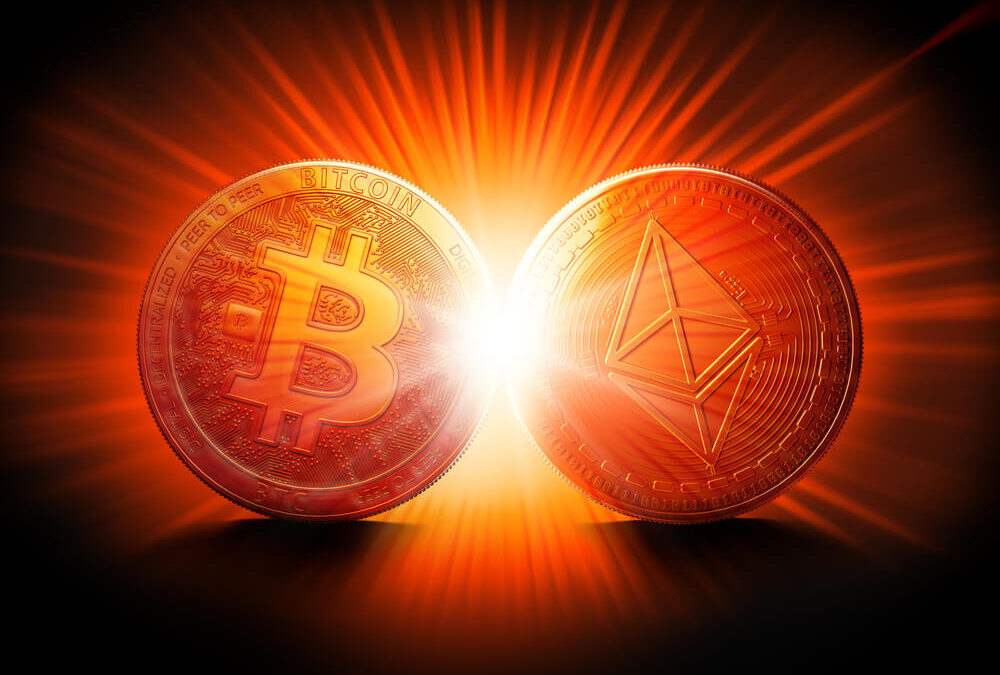Welcome back for the third part of my “Ask the Crypto Expert” series featuring my crypto guy, Banyan Hill’s Ian King.
Over the last few weeks, we’ve discussed different ways to invest in cryptocurrencies and the future for ethereum.
But what about the past? How did Ian gain interest in this exciting new asset class?
(Note: Ian’s been making his crypto investors a lot of money for years now. Click here to learn about his newest opportunity.)
Today we dive deeper into Ian’s background, pit bitcoin against ethereum and talk about how you can earn solid annual returns within the crypto space.
Let’s get into it.
Note: This transcript features part of my interview with Ian. You can watch our entire conversation above. Looking for our previous discussions? Part One is here. Part Two is here.
Ian King’s Crypto Start
Adam: I want to take a step back and let folks know a little bit more about your background. You’ve been in traditional finance and investments in the markets for quite a while.
How did you get into traditional finance, and what are some of the things you did in your prior career?
Ian: I started out, oh boy, 25 years ago at Solomon Brothers in fixed-income trading. I was a desk clerk that would just check out orders. Back then Solomon was a meritocracy.
I worked my way up. I hustled. I got to work early, stayed late. After a couple of years, I was promoted to junior trader analyst.
I left because I felt like I needed to take more risk in my life. I became a prop trader on Wall Street, trading equities.
Then I went on to start a little hedge fund that did really well, enough for me to take some time away from the markets after the financial crisis.
I started venture investing. I was looking at early-stage companies and innovative technologies. My focus was on electric vehicles and renewable energy.
Bitcoin came around about 2011. My history with cryptocurrencies made me skeptical about bitcoin at first … because it was kind of like the libertarians’ digital currency, right?
A lot of gold bugs were into bitcoin back then. I didn’t think it had as much real-world staying power, given the time we were in.
Ethereum came around in 2014. That’s when my interest was really piqued in cryptos. With ethereum, you had a crypto, a currency that was programmable.
This will allow for all types of autonomous smart contracts. That’s what we’re seeing right now in the crypto markets.
The big idea is being able to program something of digital value that can work on its own.
Own All the World’s Gold or Own the World Wide Web?
Adam: It sounds to me that, when you say programmable, ethereum is more a software ecosystem than it is a strict currency. Would you say that’s fair?
Ian: Yeah, think about it this way. Bitcoin is digital gold. Ethereum is a new way to power the internet and digital services.
Would you rather own all the gold in the world or own the internet?
For me, owning the internet and all digital services is more valuable than owning gold.
Which is why I think ethereum, and other Layer 1 coins that allow for smart contracts, is the better bet in the crypto markets.
Adam: That’s interesting because I know a lot of folks have a cursory understanding of crypto and see bitcoin and ethereum as one and the same.
The theory behind bitcoin is based on scarcity. There’s a set number of bitcoin that currently exist and will exist in the future.
That scarcity, in a currency arena, means it can’t get devalued the same way fiat currency can.
On the other side of the spectrum, you have ethereum, which is expandable. It’s not necessarily a scarcity play, but it’s the expandability of the ecosystem.
It’s about adoption and how many developers start to build on the ethereum platform. Would you say that’s right?
Ethereum’s Expansive Edge
Ian: Yeah, it is.
Currencies that are naturally deflationary have not worked as well, because you want something that grows with the economy. Fiat currencies have worked so far because they’ve expanded as the economy grows.
When you see the market for decentralized digital services continue to grow, you want something that expands.
Now, you don’t want something that expands too much. And you don’t want a centralized structure where a central bank just prints more money whenever things go wrong.
That’s not how a lot of these protocols are set up.
I also want to make a point that not every crypto is expansionary. A lot of them have hard caps at certain supplies.
Many of them probably have maybe 60% of the issuance out so far, and you’ve got another 40% coming.
You brought up bitcoin. It has a total supply cap of 21 million. There’s about 19 million in circulation right now. Between now and I think, 2150, they’ll still be issuing bitcoin on a daily basis.
But the number of bitcoin is reduced over time in terms of the block rewards for the miners.
Adam: Interesting. OK.
Own to Earn: What Proof-of-Stake Means
Adam: You’re saying that the proof-of-stake with ethereum, as long as I own ethereum — I can stake it, lock it up in a protocol that shows that I’m willing to verify these transactions.
I can earn rewards just by owning ethereum. Is that right?
Ian: Correct. We’re looking at 10% to 15% annual returns on staking ethereum right now.
Adam: If you think about this as a yield, like a dividend-paying stock or a bond, you’re talking a 10% to 15% annual yield by staking ethereum?
Ian: There’s a test net version going on right now of what ethereum is eventually going to become. The early users are seeing 10% to 15% yields now.
The numbers might change when you start flooding this market. Only about 10% of ethereum right now is currently staked in the test net.
In June, what’s going to happen is the existing proof-of-work chain is merging with this test net chain. That will migrate it to a proof-of-stake from proof-of-work right now.
Adam: Gotcha. This is all happening this summer.
That’s it for the third part of my interview with my good friend and crypto expert, Ian King.
Ian is excited about the future for ethereum and other cryptos.
And if you’re looking to get into this asset class before it becomes even more well established, there’s no better guide than Ian.
He just released his latest “buy alert,” but he’s helped his readers make plenty of money within the crypto space over the last few years. Gains like:
- 1,061% on Binance.
- 1,934% on solana.
- And 18,325% on terra!
And these gains all came within a year!
Of course, he isn’t ready to stop now. He even calls his newest buy alert “the greatest investment in history.”
And there’s still time to buy in before it soars higher.
Click here to see how — with as little as $20.
To good profits,

Adam O’Dell
Chief Investment Strategist




